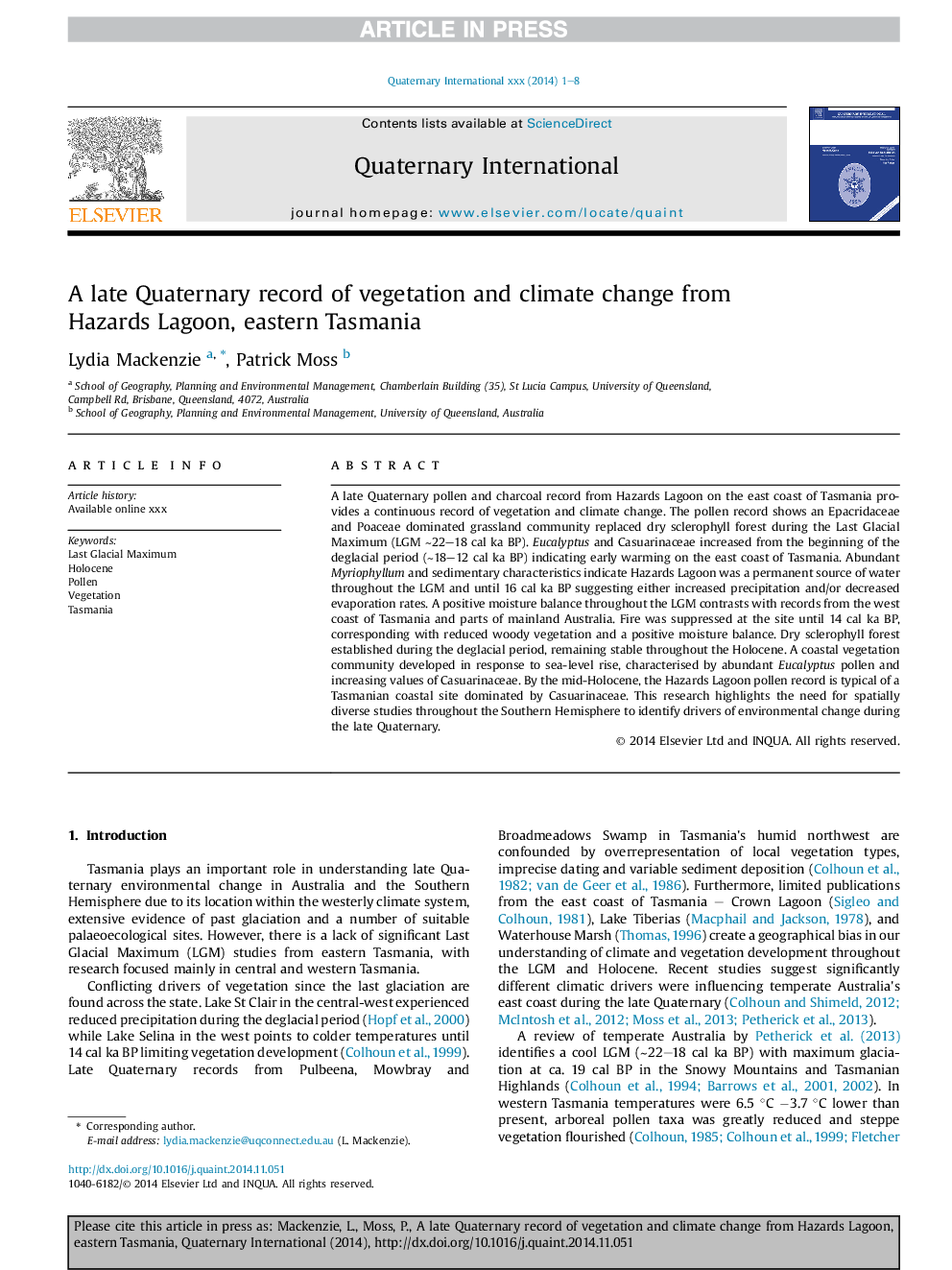| Article ID | Journal | Published Year | Pages | File Type |
|---|---|---|---|---|
| 5113450 | Quaternary International | 2017 | 8 Pages |
Abstract
A late Quaternary pollen and charcoal record from Hazards Lagoon on the east coast of Tasmania provides a continuous record of vegetation and climate change. The pollen record shows an Epacridaceae and Poaceae dominated grassland community replaced dry sclerophyll forest during the Last Glacial Maximum (LGM â¼22-18 cal ka BP). Eucalyptus and Casuarinaceae increased from the beginning of the deglacial period (â¼18-12 cal ka BP) indicating early warming on the east coast of Tasmania. Abundant Myriophyllum and sedimentary characteristics indicate Hazards Lagoon was a permanent source of water throughout the LGM and until 16 cal ka BP suggesting either increased precipitation and/or decreased evaporation rates. A positive moisture balance throughout the LGM contrasts with records from the west coast of Tasmania and parts of mainland Australia. Fire was suppressed at the site until 14 cal ka BP, corresponding with reduced woody vegetation and a positive moisture balance. Dry sclerophyll forest established during the deglacial period, remaining stable throughout the Holocene. A coastal vegetation community developed in response to sea-level rise, characterised by abundant Eucalyptus pollen and increasing values of Casuarinaceae. By the mid-Holocene, the Hazards Lagoon pollen record is typical of a Tasmanian coastal site dominated by Casuarinaceae. This research highlights the need for spatially diverse studies throughout the Southern Hemisphere to identify drivers of environmental change during the late Quaternary.
Related Topics
Physical Sciences and Engineering
Earth and Planetary Sciences
Geology
Authors
Lydia Mackenzie, Patrick Moss,
